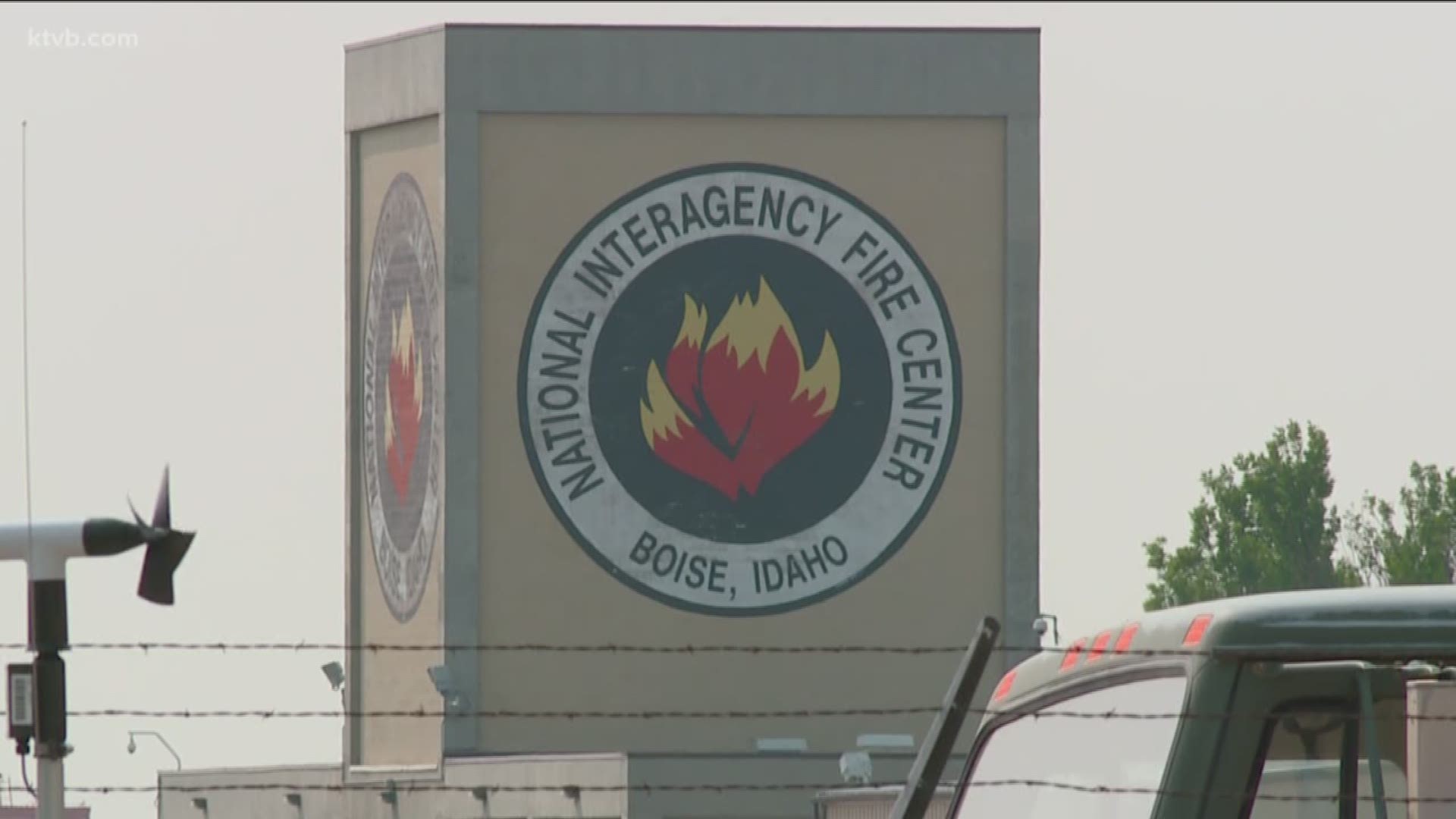BOISE — Much of the West is in the grip of a dangerous fire season.
In California alone, there are 16 large and out of control wildfires burning. Here in Idaho we have major fires of our own. We also have what could be called the epicenter of wildfire response: the National Interagency Fire Center, or NIFC.
KTVB's Morgan Boydston took a tour of the campus to see different operations.
One of the largest operations is the Great Basin Incident Support Cache. Firefighting supplies are stored in an 80,000 square-foot warehouse and are shipped out to southern Idaho, Nevada, Utah and part of Wyoming.
"Every time they call out team onto a fire - Type 1, Type 2, or Type 3 - they'll put in an order down at our main warehouse and that's when they'll send it all out to the fires," Jennifer Brooks, a packer at what's called the Returns Warehouse, said. “If we have a fire outside of that region, a different cache will deal with it but we will also help support that cache to be able to support that fire,”
The nation's logistical support center is made up of nine different agencies and organizations.
"This is a place, not an actual organization in itself because we are interagency," NIFC Public Affairs Specialist Carrie Bilbao said, "so fire managers from each agency will work together to coordinate resources to give to the field, basically, and designate where they're' going to support firefighters in the field."
The National Interagency Fire Center is where those leaders make critical decisions, cooperate, share resources, and manage and support wildland firefighting across the nation.
“Nationally we're broken down into geographical units. So NIFC helps support those units,” Bilbao added.
Among other operations, NIFC houses the largest radio cache in the world. The wildland fire community's national radio and repeater cache has three elements: radios and telecom, avionics (aircraft communication systems in firefighting aircraft) and infrared technology.
"All the radios in the nation are actually dispatched out of or sent from the Great Basin Cache and that's supporting communications within the incidents," Bilbao said.
Also on campus are the Remote Automated Weather Stations, or RAWS. They are defined as self-contained, portable, battery/solar powered weather stations that provide real-time local weather data used in predicting fire behavior and fire management.
"Real-time weather readings for maybe areas that don't have a weather station nearby, because weather is critical for fighting fires and knowing what's to be expected," Bilbao said.
Yards away is the Returns Warehouse where crews have been busy refurbishing, cleaning, and fixing fire equipment.
"So anything that comes in off of a fire will be sent over to this area, unloaded off a truck, brought over to this area and they'll go through every item, refurb it to put it back into our inventory so that we are able to build more kits and put them back to the shelf to send to all the firefighters," Brooks told KTVB. "We separate everything because we have hose that we do outside, we sharpen all the tools down in our tool shop, then we have kits."
Supplies from across the country that come back to the Returns Warehouse are labeled with what fire they were returned from in order to ensure it's credited back to the incident.
"This will all go be cleaned, double-checked to make sure there's nothing wrong with it. If we can fix it, we fix it. If not, we have to get rid of it," Brooks added as she showed us equipment that had come in.
Busy also defines the National Interagency Coordination Center, or NICC, which is a hub for coordinating the national mobilization of resources for incidents throughout the country. Its major components are equipment and supply dispatching; overhead and crew dispatching; aircraft dispatching; and predictive and intelligence services. In the dispatching system, NICC has a three-tiered approach starting with the local dispatch, then geographic area, and then national.
According to the NIFC website, "NICC is the sole dispatch center for heavy airtankers, lead planes, smokejumpers, hotshot crews, Type 1 Incident Management Teams, area command teams, medium and heavy helicopters, infrared aircraft, military resources, telecom equipment for fires, Remote Automated Weather Stations (RAWS), and large transport aircraft."
“They've been dispatching things like equipment, such as engines, dozers, trying to find crews like hand crews, hotshot crews. They have an aircraft desk that supports where aircraft is going, as well and supplies. So yeah, they're busy," Bilbao told KTVB.
NIFC just issued a 'Preparedness Level 5' for the U.S. - the highest level possible. Resources are spread thin throughout the country, they say. Preparedness levels are issued to help assure firefighting resources are ready to respond to new incidents and are determined by resource availability, fuel and weather conditions and fire activity. NIFC's website says as the preparedness levels rise, more federal and state employees are available for fire mobilization if necessary.
"When we hit a 'Level 5' that's when we're calling everybody in to come help us, any resources we can get," Brooks added.
"NIFC does issue that level because we're seeing orders coming in that we can't fill. That's when they know - and plus the fire severity, just the number of fires we've seen lately. And we actually went into it pretty quickly with it being planning level 3 just a few weeks ago then a lightning storm came through," Bilbao said. "Numerous fire starts within a short period of time, so you can imagine it just extends their resources."
This amid a hot, dry fire season that doesn't seem to be letting up any time soon.
“It’s a little bit of a later season so it's just getting started,” Brooks added.
The fire outlook just came out and it's showing hot, dry, windy conditions with potential thunderstorms throughout the month of August. NIFC told KTVB fire seasons are so bad they're looking to start calling them "fire years".

